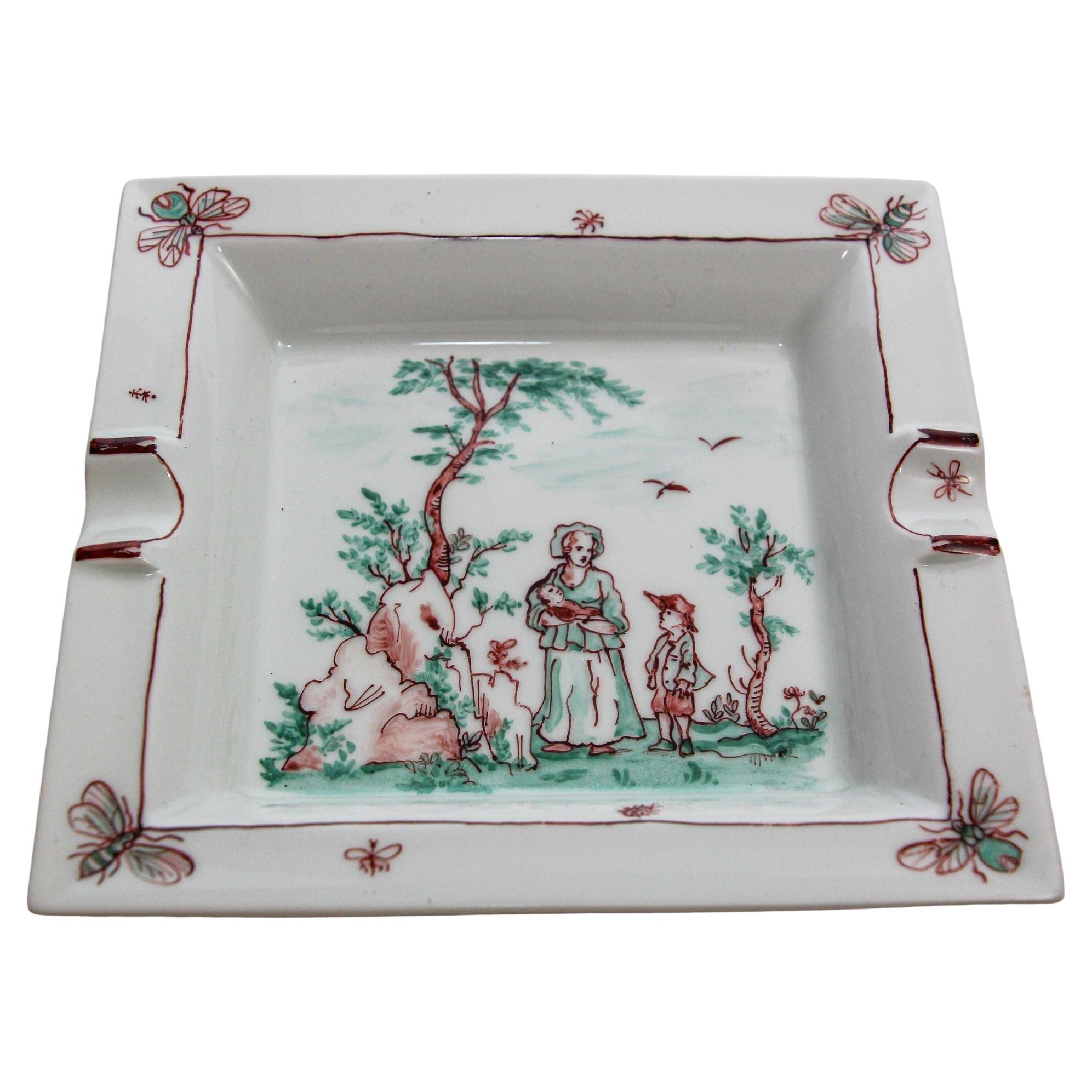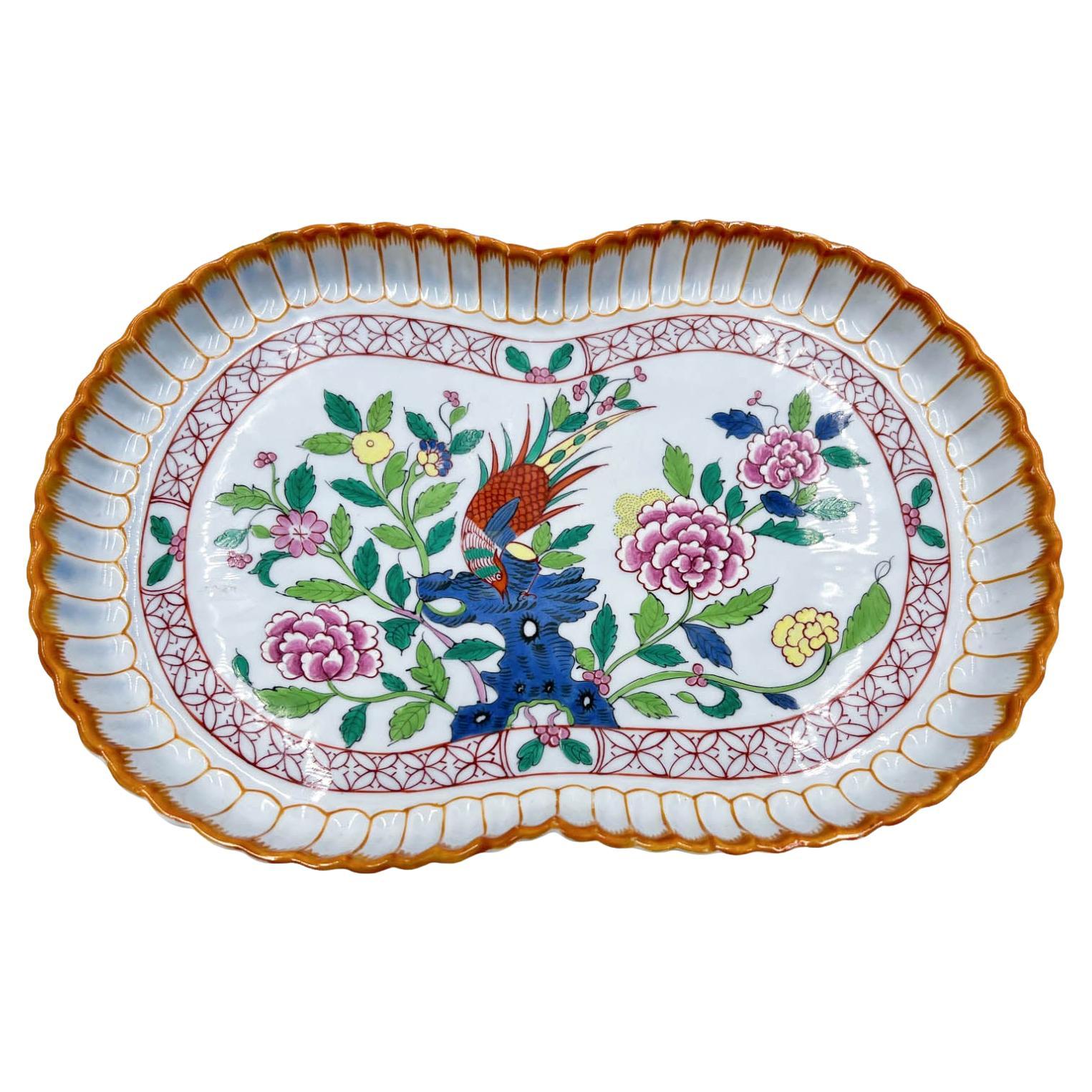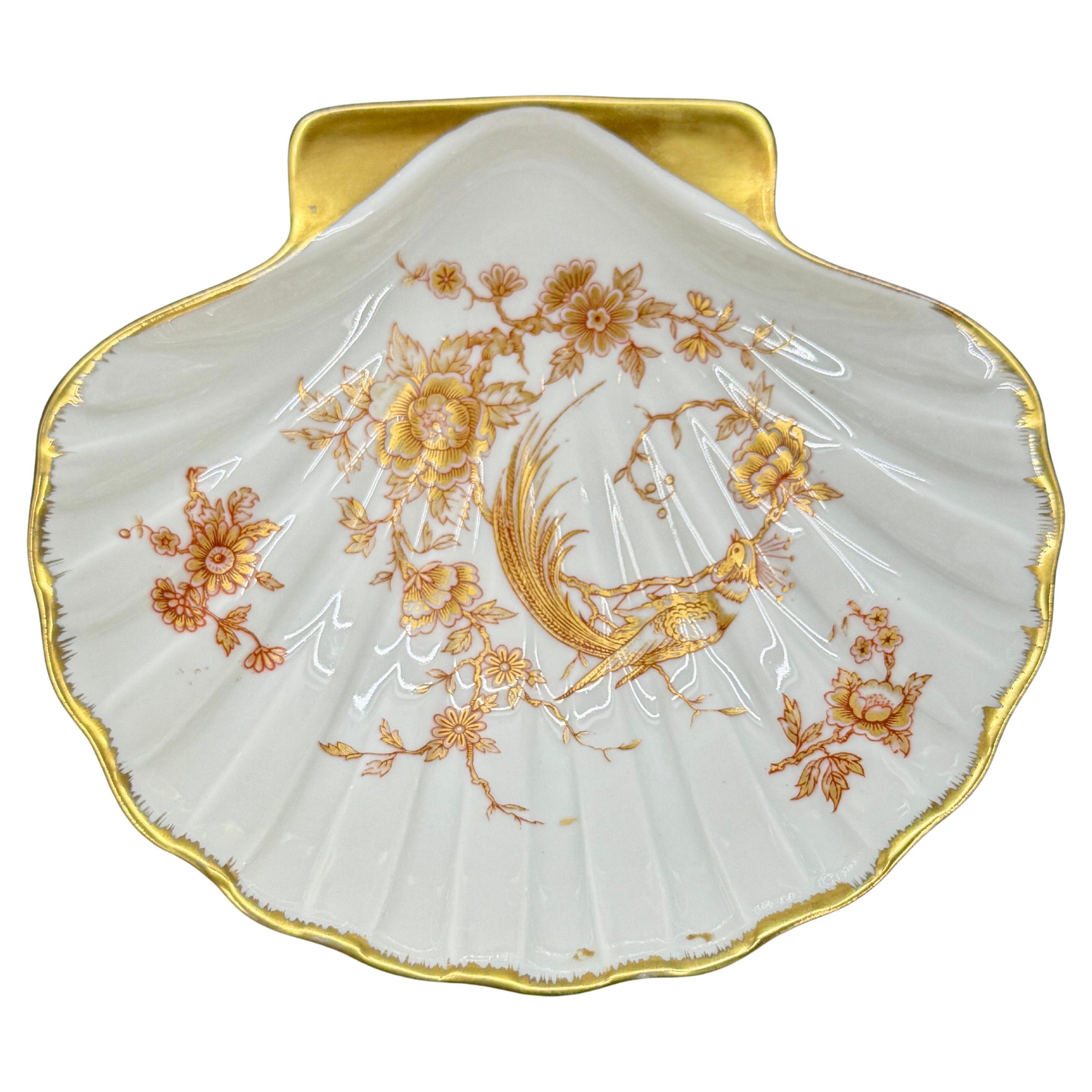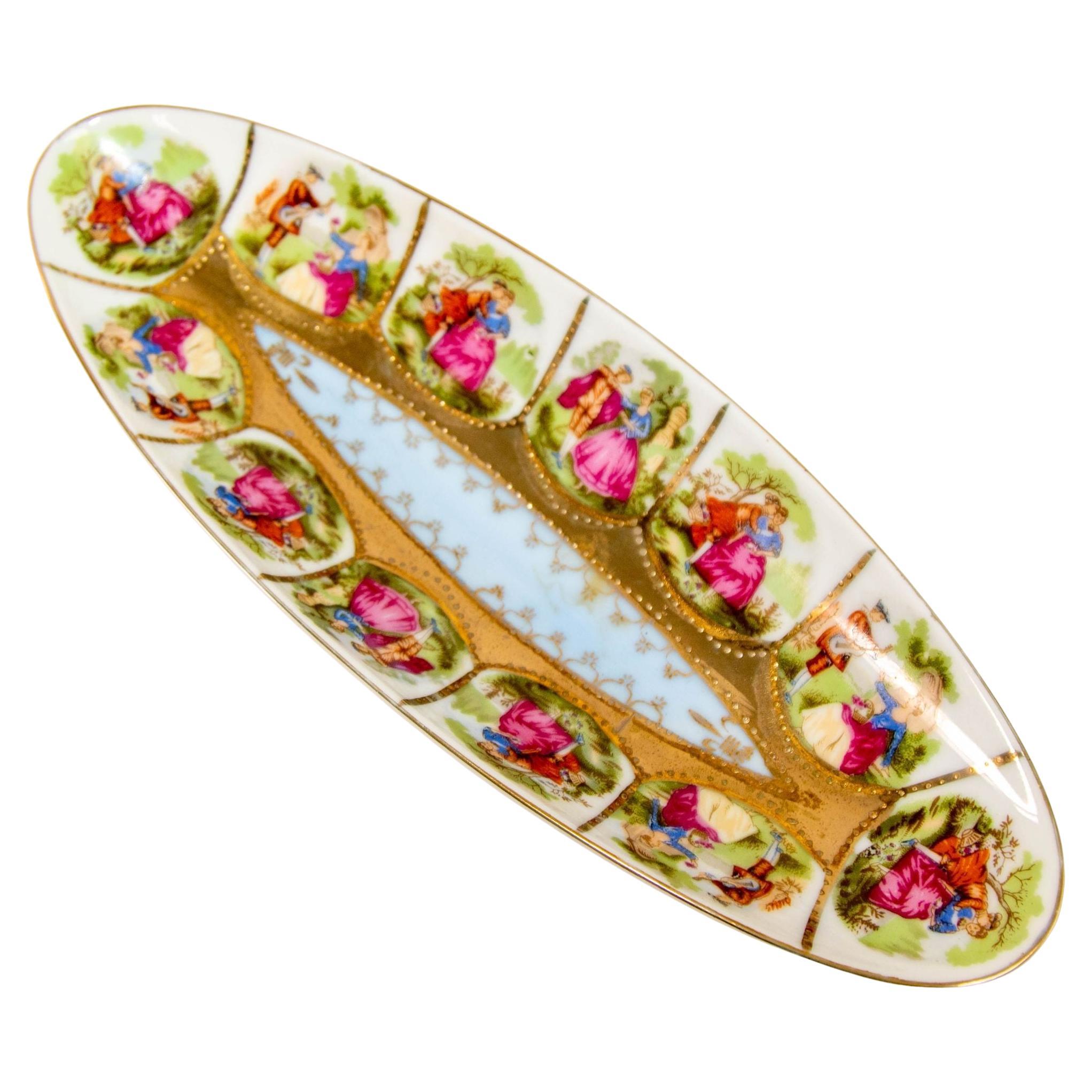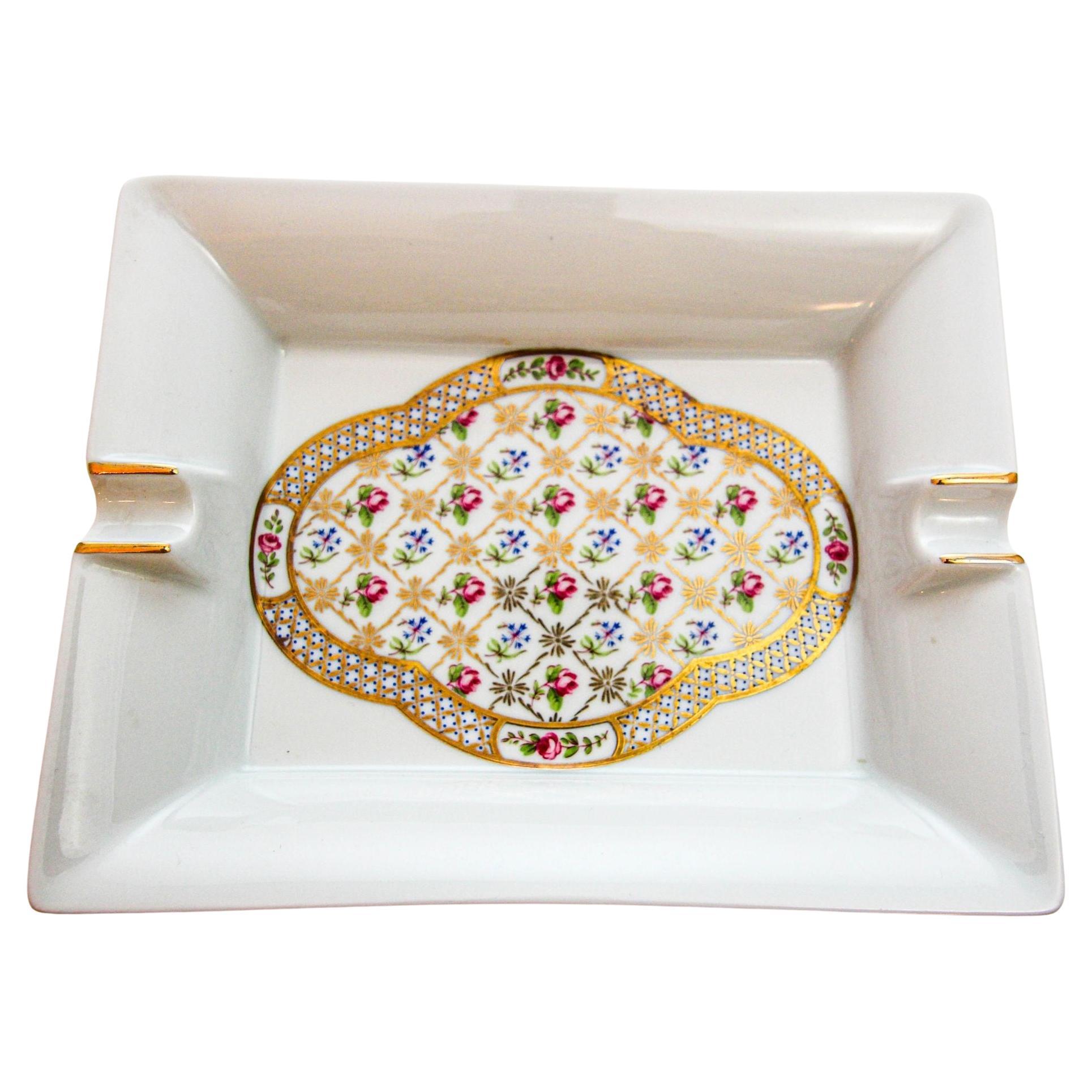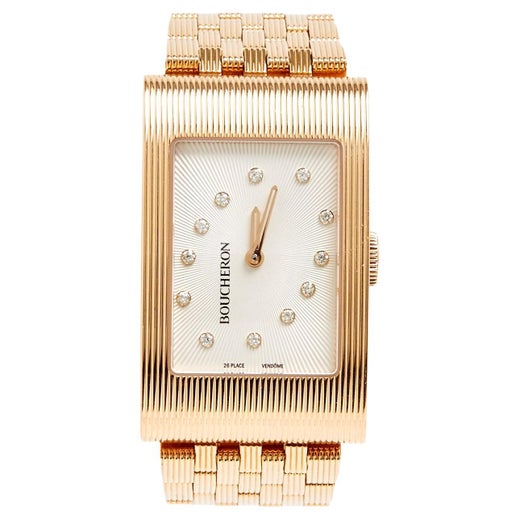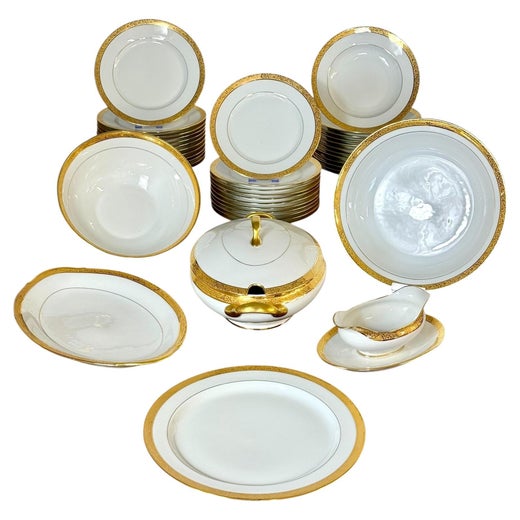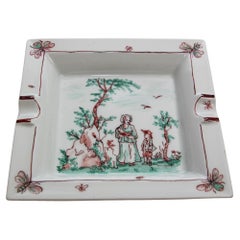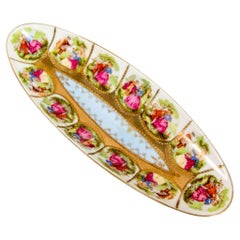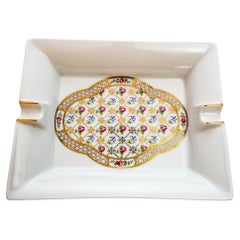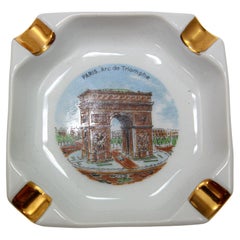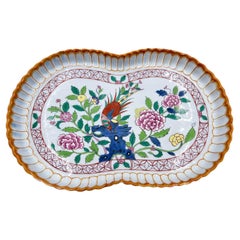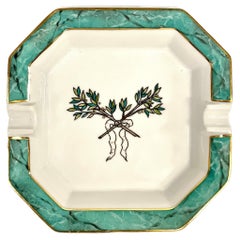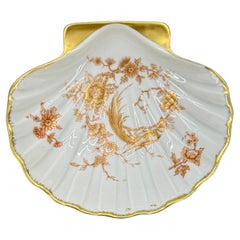Boucheron Paris Porcelain Trinket Tray by Limoges, Hand-Painted, France c.1980s
About the Item
- Creator:
- Dimensions:Height: 1.25 in (3.18 cm)Width: 6.75 in (17.15 cm)Depth: 6.75 in (17.15 cm)
- Style:Neoclassical (In the Style Of)
- Materials and Techniques:
- Place of Origin:
- Period:
- Date of Manufacture:1980
- Condition:Wear consistent with age and use. good.
- Seller Location:North Hollywood, CA
- Reference Number:Seller: BASH7251stDibs: LU906845815312
Boucheron
As the oldest high-end jewelry boutique on the legendary Place Vendôme in Paris, dating to 1893, Boucheron stands for history, sensuality and avant-garde style. The French fine jewelry house has created iconic rings, necklaces and other adornments over its more than 160-year history for royalty like the Russian imperial family, the Maharaja of Patiala and Elizabeth, the Queen Mother. It has also received popular acclaim for its modern designs and playful motifs such as serpents and cats.
Since its founding in 1858 by Frédéric Boucheron with a boutique at the Palais Royal arcades, the maison has sought to create unforgettably unique pieces, push the boundaries of innovations in jewelry design and celebrate the opulence of gold. Many of its pieces are sculpted in gold by expert goldsmiths so that the material becomes a design element in its own right.
At its best, Edwardian jewelry was all about the exquisite diamond, platinum and pearl creations made by such famous names as Cartier and Boucheron. Later, Frédéric’s son Louis became especially interested in the Art Deco style as well as accessories like cigarette holders, bags and belts.
Boucheron is most famously known for its sources of inspiration: nature, animals and the earth. Its iconic Serpent Bohème collection, introduced in 1968, references the curves and scales of the animal with pear-shaped motifs and coiled accents adorned with diamonds and other precious stones like turquoise, lapis lazuli and malachite. (A 1960s-era Boucheron brooch featuring a lavish mound of artfully assembled round and baguette diamonds set in platinum is a dinner-party conversation starter from any angle.)
Frédéric Boucheron gave a serpent necklace to his wife as a symbol of love and protection. Leopards, hummingbirds, deer and hedgehogs are referenced in the Animaux de Collection, while high-end 3D technology in the Nature Triomphante meticulously re-creates flower petals, ivy branches and other organic forms.
Boucheron also pays homage to Paris, the city where it was founded. The octagonal shape of the Place Vendôme is translated into the geometric Liseré pieces, and the Clou de Paris motif — which is integral to the house's Quatre series — is inspired by the cobblestones on its streets. Since 1859, when Boucheron introduced a collection of pocket watches, the maison has also regularly created timepieces with the same elegance and refinement as its jewelry.
Despite having such a long legacy, Boucheron has always been ahead of its time. Its creative collections and bold jewelry remain coveted and cherished. In 2018, its flagship in the Place Vendôme reopened after a restoration under its current owner Kering.
Find antique and vintage Boucheron jewelry on 1stDibs.
Limoges
Limoges porcelain has withstood the test of time for centuries. The widely cherished ceramics named for the French city and commune in which they are made are synonymous with sophistication, elegance and refinement. Today, antique Limoges dinnerware, serveware, decorative objects and other porcelain products are coveted and collected all over the world.
The story of Limoges porcelain, which refers to porcelain made in the Limoges region of France — not by a specific factory — begins in 1768. The region is a rich source of kaolin, feldspar and quartz — vital ingredients to the production of this type of pottery.
Porcelain was first made in China and spread all over the world owing to the trade routes to the Far East established by Dutch and Portuguese merchants. Given its origin, English speakers called porcelain “fine china,” an expression you still might hear today. "Fine" indeed — for over a thousand years, it has been a highly sought-after material. Meissen Porcelain (Staatliche Porzellan-Manufaktur Meissen), which was founded in the Electorate of Saxony (now Germany), is one of the preeminent porcelain factories in Europe and was the first to produce true porcelain outside of Asia.
Limoges porcelain refers to porcelain produced in and near the city of Limoges — it does not refer to a specific manufacturer — and it’s distinctive for its luminous hue and bright white qualities, providing an ideal canvas for intricately detailed hand-painted decorations. (Revered Impressionist painter Pierre-Auguste Renoir began his career painting plates in Limoges.)
It wasn’t long before Limoges porcelain captured the attention of King Louis XVI — the region’s first manufactory, established toward the close of the 18th century, was placed under the protection of the King’s brother, the Comte d’Artois. It was later purchased by the King and became Manufacture Royale de Limoges. The facility produced a variety of pieces, including delicate, gold-embellished trinket boxes, ornamental vessels, Rococo-style figurines and elaborate dinnerware service sets.
Following the end of the French Revolution in 1794, Limoges porcelain was no longer restricted, and the commercial porcelain industry ballooned.
By 1819, Limoges had four porcelain factories, and as demand for porcelain grew during the 19th century, the industry expanded in the French city. In 1853, American businessman David Haviland opened the Haviland & Co. factory in Limoges to export porcelain to the United States. The company produced several iconic serveware collections for many American presidents, including Abraham Lincoln, Ulysses S. Grant and Rutherford B. Hayes. Bernardaud opened in the early 1860s.
By 1900, Limoges had 35 factories, which employed close to 8,000 workers. In 1925, Limoges porcelain was shown at the International Exhibition of Modern Decorative and Industrial Arts — the design fair in Paris that brought global attention to the Art Deco style — where it garnered international acclaim.
During the 20th century, Limoges factories such as Bernardaud collaborated with a range of notable artists and designers, including Franz Bischoff, Joan Miró, Raymond Loewy, Alexander Calder and Julian Schnabel, to name a few.
Today, authentic Limoges porcelain tableware, vases and objets d’art continue to gain renown with collectors and design lovers all over the world.
Find an extensive collection of antique Limoges porcelain on 1stDibs.
- ShippingRetrieving quote...Shipping from: North Hollywood, CA
- Return Policy
More From This Seller
View AllLate 20th Century French Decorative Dishes and Vide-Poche
Porcelain
Early 20th Century Austrian Baroque Revival Decorative Dishes and Vide-P...
Porcelain
Late 20th Century French Louis XIV Ashtrays
Porcelain
Mid-20th Century Louis XIV Ashtrays
Porcelain
Mid-20th Century French French Provincial Ashtrays
Porcelain
Late 20th Century German Baroque Revival Ashtrays
Porcelain
You May Also Like
Vintage 1940s Hungarian Porcelain
Porcelain
20th Century French Decorative Dishes and Vide-Poche
Porcelain
Mid-20th Century French French Provincial Porcelain
Porcelain, Paint
Early 20th Century French Delft and Faience
Faience
Antique Late 19th Century French Decorative Dishes and Vide-Poche
Ceramic
Antique Late 19th Century French Napoleon III Pottery
Majolica
Read More
This Gem-Encrusted Boucheron Brooch Is a Symbol of Mid-Century Glamour and Clever Design
Though it sparkles with more than 27 carats of diamonds, this multifaceted gem delivers more than just dazzle.
7 Vibrant Jewels for a Breezy Late-Summer Wardrobe
Soak up the pleasures of the season with a these bold gems.
